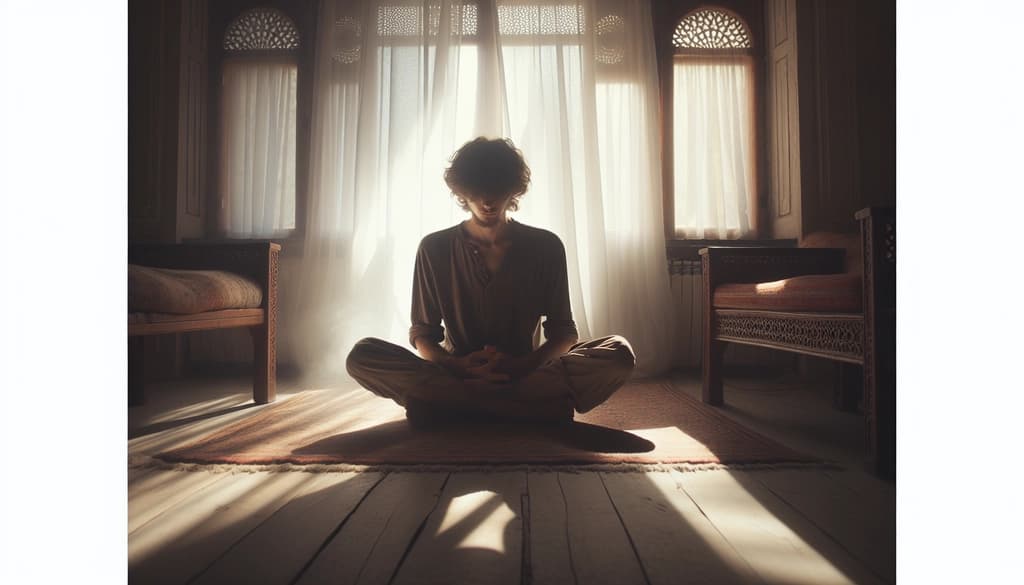How to Release Inner Resistance: Meeting the Unseen Barriers Within

Recognizing Inner Resistance: The Shape of Our Suffering
Inner resistance is the body’s way of saying “not yet.” It can take the form of tightening muscles, shallow breath, an endless loop of worried thoughts, or subtle emotional bracing. Sometimes, resistance masquerades as irritation, numbness, procrastination, or even spiritual striving. It is a brave but constricted attempt to keep pain or fear at bay.
When we face suffering—whether a difficult conversation, uncertain future, or an old wound felt anew—our conditioned response is often to clench. We want to escape, fix, or transcend what is, believing that peace lies just beyond the next effort. Yet paradoxically, the harder we try to force letting go, the more resistance grows. If you’re curious about the broader reasons behind our struggles, you may find further perspective in Why do we suffer.
Why Letting Go Is So Hard
Letting go is not a single act. It’s an unwinding—slow, organic, and mysterious. We cling because the mind fears what might happen if we don’t: Will I fall apart? Will I get hurt again? This cling is self-protection—an ancient, intelligent response that once kept us safe.
You might notice, as you attempt to soften, just how fiercely the body wants to hold on. Awareness alone can begin to loosen the bonds. Sometimes, the first gesture is simply to recognize: “Ah, resistance is here. A part of me is trying to protect me.” There is no enemy within, only parts longing for safety. For some, understanding how desire and suffering connect sheds light on these deep patterns. You might explore Desire and suffering connection as a resource.
Gentle Practices to Release Inner Resistance
You might try beginning with the breath. Rest your attention—soft, not searching—on wherever discomfort lives in your body. Notice the edges of tension: Is it sharper with the inhale, softer with the exhale? See if you can occupy the very same space as resistance, simply sitting with it as you would a weary friend.
If it feels right, place a palm on the area that feels most constricted. Let warmth and acceptance flow through your hand. Whisper to yourself, “You are safe for now. I see you.” Sometimes, releasing is tied to understanding our attachments. For more insight on this, consider reading about Letting go of attachment.
Guided meditations can offer a spoken holding, inviting you to stay near to your discomfort without being consumed by it. Lovingkindness phrases—“May I be gentle with myself”—can help soften the urge to push away. If you wish to dive deeper into the roots and resolution of suffering, you might turn to the Meaning of dukkha or explore what is described in Four noble truths explained.
Awakening Beyond the Mind: Meeting Resistance with Awareness
Resistance is not only a mental event; it is woven through the body’s tissues and the heart’s hidden chambers. To awaken beyond the mind is not to eliminate thought, but to see through its spells.
Sit quietly and sense what is here. Can you feel how the mind wishes to label, judge, narrate? Imagine your awareness is the sky, vast and permissive, and that every sensation, every tightening, is a changing weather pattern. Nothing needs to be controlled. Everything belongs. At times, contemplating freedom from suffering—sometimes called moksha—can bring a new spaciousness. You can learn more by reading What is moksha.
Finding Peace in Suffering
There is a strange freedom in ceasing to wage war with ourselves. Sometimes, peace arises not when pain disappears, but when it is allowed to exist fully in loving awareness. Even a breath of this peace—within heartbreak or resistance—can become a door to deeper compassion.
You might take this into your day. While washing dishes, notice if your jaw tightens, if your shoulders brace. Allow yourself to soften, just for an instant. In conversation, when anxiety springs up, meet it with a silent acknowledgment: “I feel you.” If your longing leads you beyond release toward the wish to end all suffering, there is further wisdom in How to end suffering.
One night, when sorrow pressed close against his ribs, he stopped struggling. For the first time, he let himself feel the ache in the center of his chest, neither naming it nor pushing it away. To his quiet surprise, what had been dense and painful became spacious—almost tender in the holding.
The Unseen Gifts of Letting Go
With practice, releasing inner resistance becomes less an achievement and more an invitation—a way of being with life, as it is, without gripping or fleeing. This softening ripples out: patience grows, relationships deepen, the world appears less hostile.
Some scientists say that allowing difficult feelings with awareness helps regulate the brain and ease stress hormones. But beyond facts, what you may discover is a wider sense of self—less confined, more at home in uncertainty, subtly awake to the beauty woven even into struggle.
May you know that resistance need not be banished. It is simply a gatekeeper, awaiting your gentle presence. Allow yourself these moments of surrender. Let peace arise, not in the absence of hardship, but in the profound permission to meet yourself, exactly as you are.
